Another year of achievements at KAUST
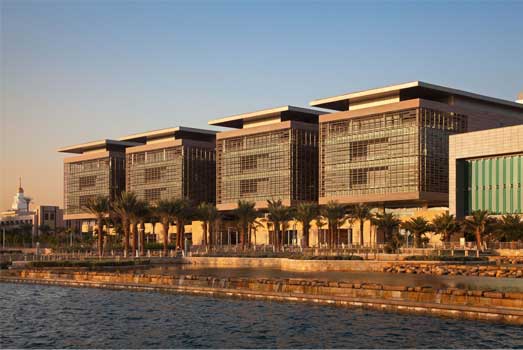
As we embark onto a new year, we look back at some of the achievements at KAUST during the University’s milestone fifth anniversary year.
Center Inaugurations and Director Appointments
Following five years of development, starting with just two faculty members and one postdoc, KAUST’s Clean Combustion Research Center (CCRC) was inaugurated, in February of 2014, with seven faculty members and a team of eighty people (including postdocs, PhD students, and staff). “We’ve seen dramatic growth just in the last two years” said CCRC’s Director, appointed since the inauguration, Prof. William L. Roberts. Over the next few years, the goal is to raise those numbers to 10 faculty members and a group of 120. The energy-efficient combustion research conducted at CCRC aims to move us towards "the ends of the crude oil spectrum," Prof. Roberts said.
Several weeks later, in April, it was the Solar & Photovoltaics Engineering Research Center's turn to be officially inaugurated. The two-day seminar was held in conjunction with the opening brought to KAUST some of the world’s top leaders in the field of solar energy. A major outcome of the symposium was the signing of a memorandum of understanding between KAUST and the Stuttgart-based Centre for Solar Energy and Hydrogen Research Baden-Württemberg (ZSW) to develop thin-film photovoltaic technology. Around the same time, Prof. Jean-Luc Bredas, a distinguished scientist in the field of organic semiconductors and solar cells, was announced as the director of the center. The center’s vision is to “provide the foundation for innovation in efficient and low-cost disruptive solar cell and energy technologies.”
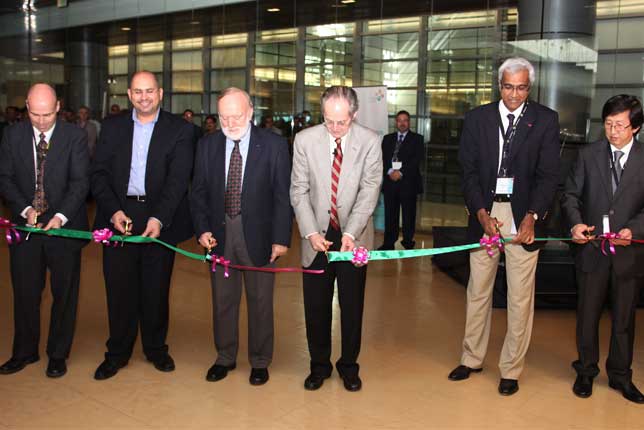
Inauguration of the Clean Combustion Research Center (CCRC)
In the month of November, KAUST and Saudi Aramco jointly hosted a two-day Upstream Petroleum Symposium aimed at highlighting state-of-the-art and recent developments in understanding fluid flow and recovery in conventional and unconventional hydrocarbon systems. The conference served as a platform for academics from KAUST and other institutions from around the world to join forces with Saudi Aramco’s upstream petroleum experts to examine critical issues in this field.
In addition to the appointments above to helm KAUST research centers, Prof. Heribert Hirt was appointed as the new Director of the Center for Desert Agriculture (CDA), along with Prof. Mark Tester as the CDA’s Associate Director; and Prof. TorOve Leiknes was appointed as the new Director of KAUST’s Water Desalination and Reuse Center (WDRC). Another announcement in 2014 was the appointment of Prof. David Keyes as the Director of the Extreme Computing Research Center (ECRC), a new center. The team of scientists at ECRC creates “algorithms and develops software to harness the exponentially increasing power of computer hardware for predictive simulation and to understand and exploit the deluge of digital scientific data produced at KAUST and beyond.”
Shaheen II Supercomputer
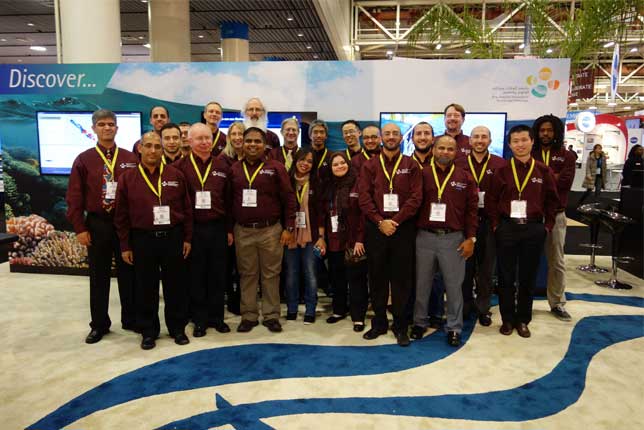
KAUST delegation at the Super Computing 2014 Conference (SC14) in New Orleans, Louisiana
Of course, successfully harnessing the power of extreme computing necessitates an investment in state-of-the-art computational resources. In November, KAUST announced the acquisition of a Cray XC40 supercomputer, called Shaheen II.
“Our goal is to empower faculty and students with the freedom to think big, aim high and explore some of the world's most difficult challenges,” said KAUST President Jean-Lou Chameau.
Shaheen II will be twenty-five times more powerful than KAUST’s current system.
The continuing thrust by the University to advance scientific discoveries and knowledge, as well as attracting some of the world’s best researchers, will certainly be enhanced by this investment aimed at ensuring that KAUST maintains and grows its status as a world-class academic and research institution.
Bill Gates Visits KAUST
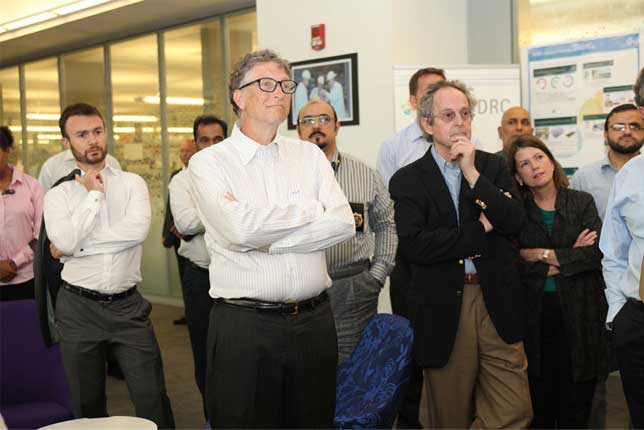
Bill Gates visiting KAUST labs
The innovative and impactful research being conducted at KAUST is not only a significant draw for potential students and faculty, but is also being noticed by industry leaders and organizations wishing to tackle some of the world’s most pressing problems.
On June 24, Bill Gates, world-renowned technology pioneer, philanthropist and co-chair of the Bill & Melinda Gates Foundation came to visit KAUST on an exploratory tour.
Mr. Gates was particularly interested in exploring possible collaborations between his foundation and KAUST scientists engaged in tackling important world problems relating to food and water. The solutions sought by Gates center around sustainable agriculture as a tool to face the challenges of food security in the developing world -- particularly in Africa and India. He also visited KAUST scientists focusing their research efforts on sustainable water treatment solutions.
Boeing Inaugurates an R&D Office at KAUST
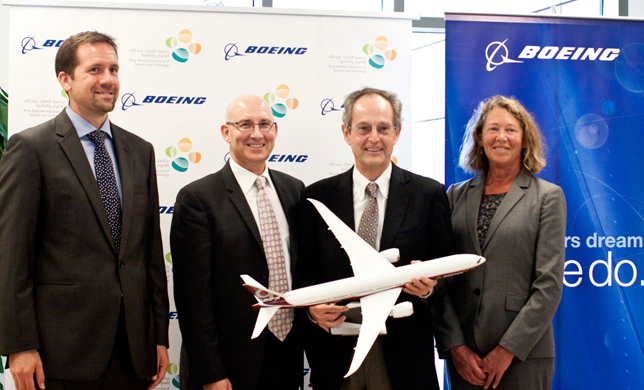
Official inauguration of the new Boeing Research & Technology (BR&T) office at KAUST
Solidifying an already well-established research partnership with KAUST, through the KAUST Industry Collaboration Program (KICP), Boeing inaugurated a research and development office to be located at the University's Research and Technology Park.
The Boeing Research & Technology (BR&T) office will be one of the cornerstones of Boeing’s long-term commitment to Saudi Arabia.
GCR Symposium
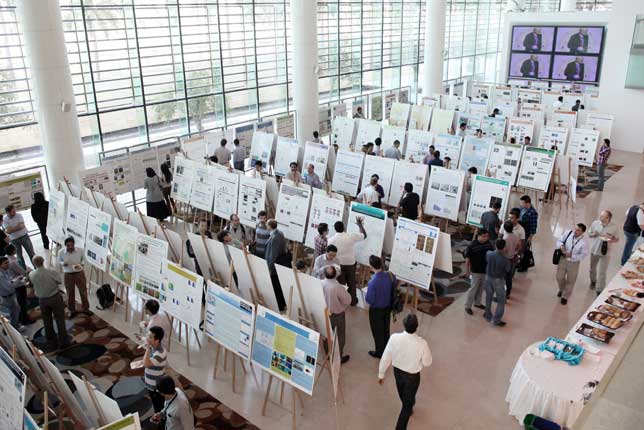
Poster competition as part of the GCR symposium
The Global Collaborative Research (GCR) program was an important initiative, launched in 2007, to help establish KAUST’s research programs. The GCR program engaged a network of over 30 renowned institutions from 15 countries as institutional partners to assist in the evolution of KAUST as a global research university.
A GCR Symposium was held at KAUST between March 26-27, 2014, to bring together these various collaborators and partners for the purpose of thanking and acknowledging them for their contribution to the early development of KAUST.
The symposium also highlighted the key science and innovation accomplishments at these institutions produced in partnership with KAUST.
Among their many contributions, these GCR partners have helped KAUST identify great students, postdocs and faculty members who today continue to contribute greatly to our institution’s goals and mission.
Fifth Commencement Ceremony
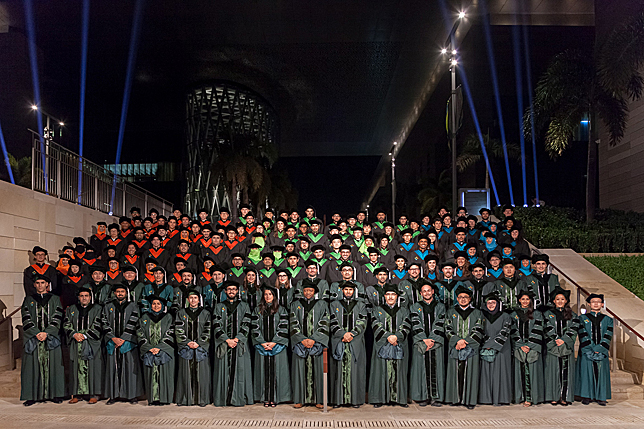
KAUST class of 2014
“KAUST is truly a place of discovery of all aspects,” said Stanford University President, Dr. John L. Hennessy, as he addressed the audience as the Distinguished Speaker at the fifth Commencement on December 12, 2014.
The ceremony saw the awarding of degrees to 38 Ph.D. students and 121 Master’s students. One of these graduates, Shamael Al-Shuhail, spoke eloquently as the Class of 2014 Commencement Speaker about her unforgettable experience at KAUST; and also expressed her gratefulness for all the opportunities afforded to her.
Winter Enrichment Program (WEP)
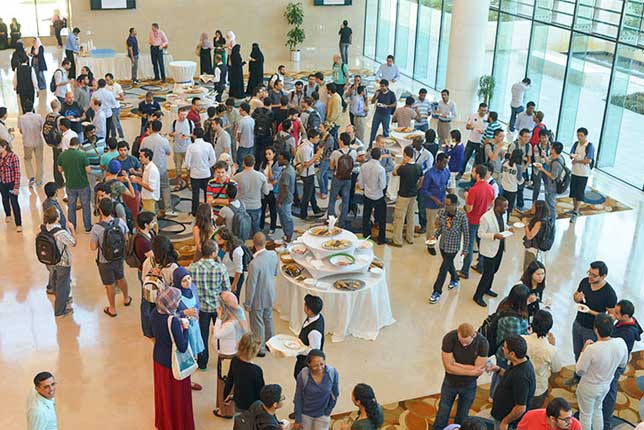
Participants at WEP 2014
The fifth annual Winter Enrichment Program (WEP) focused on themes of the International Year of Family Farming. In accordance with this overarching theme, many of the keynote speakers spoke about noteworthy scientific advancements in food and farming. Among them was the inventor of golden rice, Dr. Ingo Potrykus. The varied program, including an opening address by Saudi Aramco President & CEO, Khalid Al-Falih, also featured adventurer and explorer Mike Horn, entrepreneurship programs, the annual Science Fair, and many popular community events.
Since the last WEP, the Enrichment Program Office has also introduced the new Enrichment in the Fall program, which took place between October 17-25, 2014.

